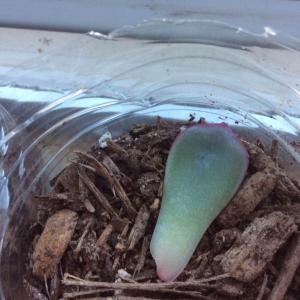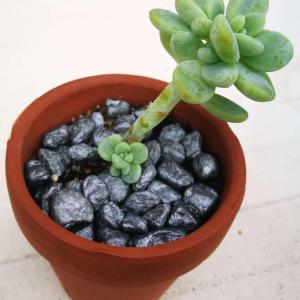成长记
astronbot
2017年10月19日

to be clear my lola, brenda song, is named after my dungeons and dragons character, brenda song, who is named after the actress brenda song. i love them all and I'm excited to see my baby plant grow and hopefully one day flower!!
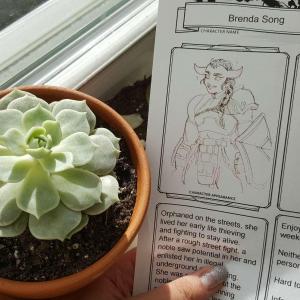

2
0
cclecombe
2017年10月17日

Took a couple of heads off my Sedum Burrito to grow a second one so for now they're callousing over the next few days before they go into soil


2
0
成长记
Estefania Pereira
2017年10月16日

perks is a weird one for me too, i think i should add more soil to it, its a pretty weird one but im hoping it will grow nicely, dont know if there are any changes from when i bought it though




0
0
成长记
oh-0kay
2017年10月15日

I now added "it might grow ? have two if these but in different pots" in my "garden"
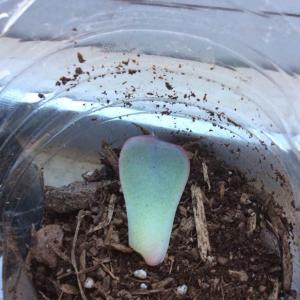

0
0
成长记
Estefania Pereira
2017年10月10日

i dont know how the hell we were liars appeared but it did and thats why its called like that mindfuck of a book, i dont know if its growing, i dont know how it should grow, its purple under the leaves, but its growing
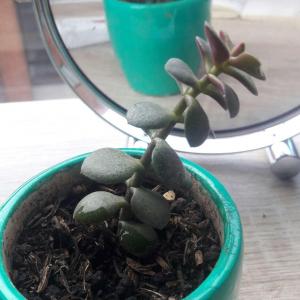

0
0
文章
Dummer. ゛☀
2017年10月08日

Cannas are lush tropical plants with huge leaves and vibrant blossoms on tall stalks. Many varieties have multicolored and patterned leaves, making them a season-long focal point.
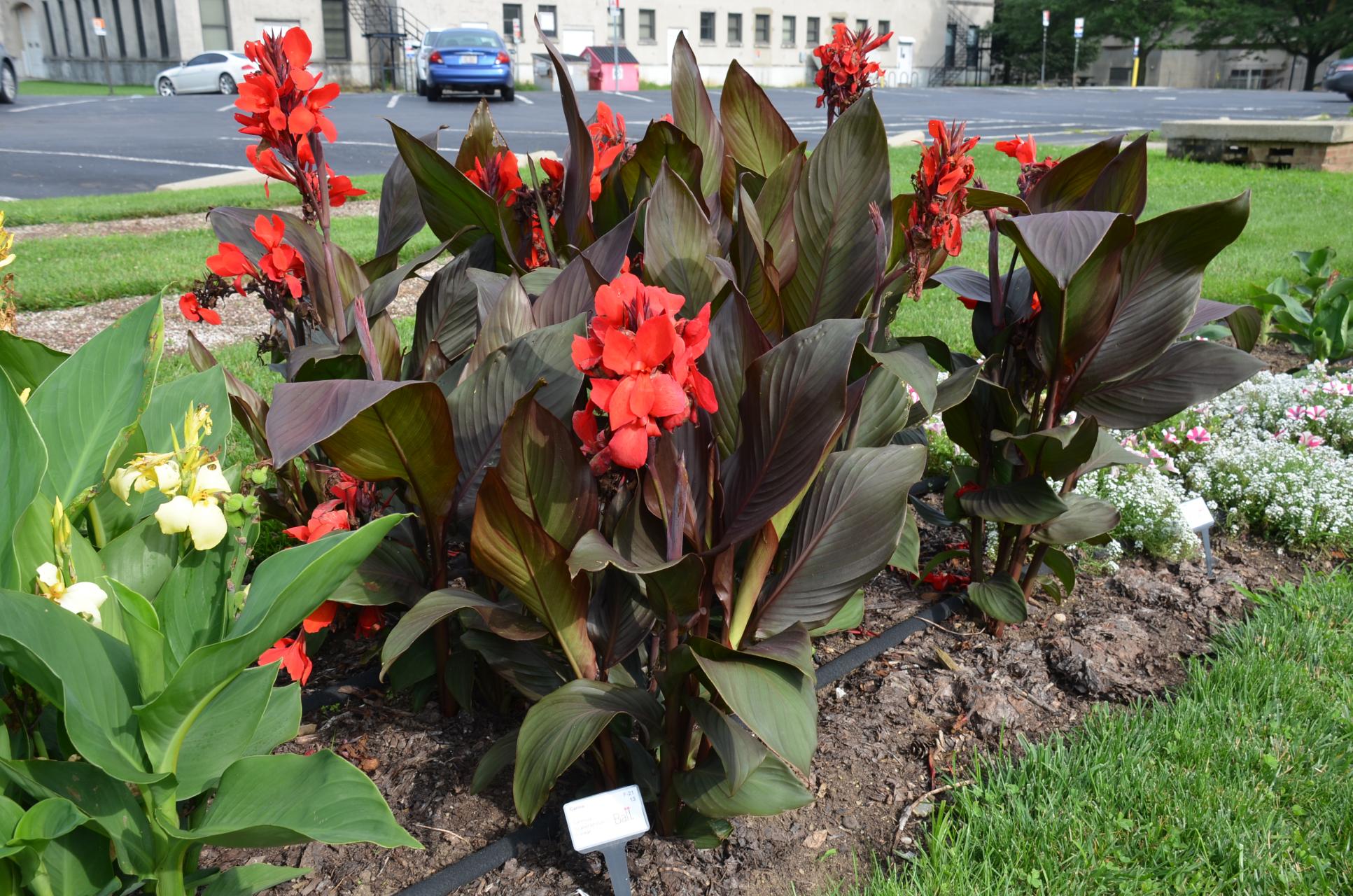
Choosing a site to grow cannas
Select a site with full sun and moist soil. Tall varieties should be sheltered from strong winds.
Special features of cannas
Unusual foliage

Planting Instructions
Plant canna rhizomes in spring after all danger of frost has passed and the soil has warmed. Prepare the garden bed by using a garden fork or tiller to loosen the soil to a depth of 12 to 15 inches, then mix in a 2- to 4-inch layer of compost. Dig a hole 4 to 6 inches deep. Set the rhizome horizontally in the hole, cover it with soil, and press firmly. Space rhizomes 1 to 4 feet apart, depending on the variety. Water thoroughly. In regions with short summers, start rhizomes indoors by potting up and placing them in a warm, sunny location.
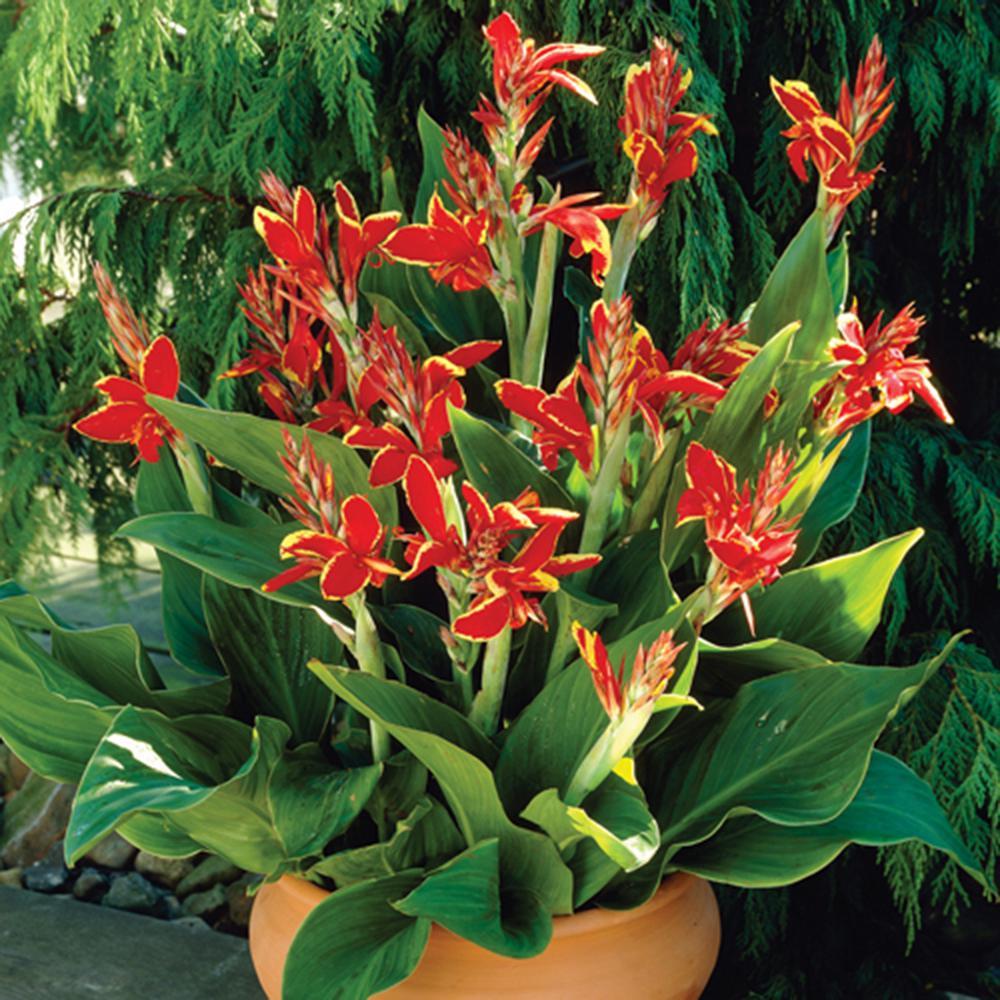
Ongoing Care
Apply a 2- to 4-inch layer of mulch around cannas to retain moisture and control weeds. Cannas prefer consistently moist soil, so water plants during the summer if rainfall is less than 1 inch per week, and water container-grown plants frequently to keep soil moist. Stake tall varieties to keep them upright. Remove flowers as they fade. In autumn, after frost kills the foliage, cut plants back to 6 inches tall. Carefully lift each clump of rhizomes and put them in a plastic-lined box filled with perlite or peat moss, spacing them so that none are touching. Store boxes off the floor in a dry area at 45 to 55 degrees F. Replant in the spring.

Choosing a site to grow cannas
Select a site with full sun and moist soil. Tall varieties should be sheltered from strong winds.
Special features of cannas
Unusual foliage

Planting Instructions
Plant canna rhizomes in spring after all danger of frost has passed and the soil has warmed. Prepare the garden bed by using a garden fork or tiller to loosen the soil to a depth of 12 to 15 inches, then mix in a 2- to 4-inch layer of compost. Dig a hole 4 to 6 inches deep. Set the rhizome horizontally in the hole, cover it with soil, and press firmly. Space rhizomes 1 to 4 feet apart, depending on the variety. Water thoroughly. In regions with short summers, start rhizomes indoors by potting up and placing them in a warm, sunny location.

Ongoing Care
Apply a 2- to 4-inch layer of mulch around cannas to retain moisture and control weeds. Cannas prefer consistently moist soil, so water plants during the summer if rainfall is less than 1 inch per week, and water container-grown plants frequently to keep soil moist. Stake tall varieties to keep them upright. Remove flowers as they fade. In autumn, after frost kills the foliage, cut plants back to 6 inches tall. Carefully lift each clump of rhizomes and put them in a plastic-lined box filled with perlite or peat moss, spacing them so that none are touching. Store boxes off the floor in a dry area at 45 to 55 degrees F. Replant in the spring.
2
2
文章
Dummer. ゛☀
2017年10月08日

Anemones, also known as windflowers, are a diverse group, with various species blooming in spring and fall. Some have fibrous roots and are found in the perennials section of nurseries and garden centers. Others grow from tubers that are sold and planted in the fall along with spring-flowering bulbs like tulips.
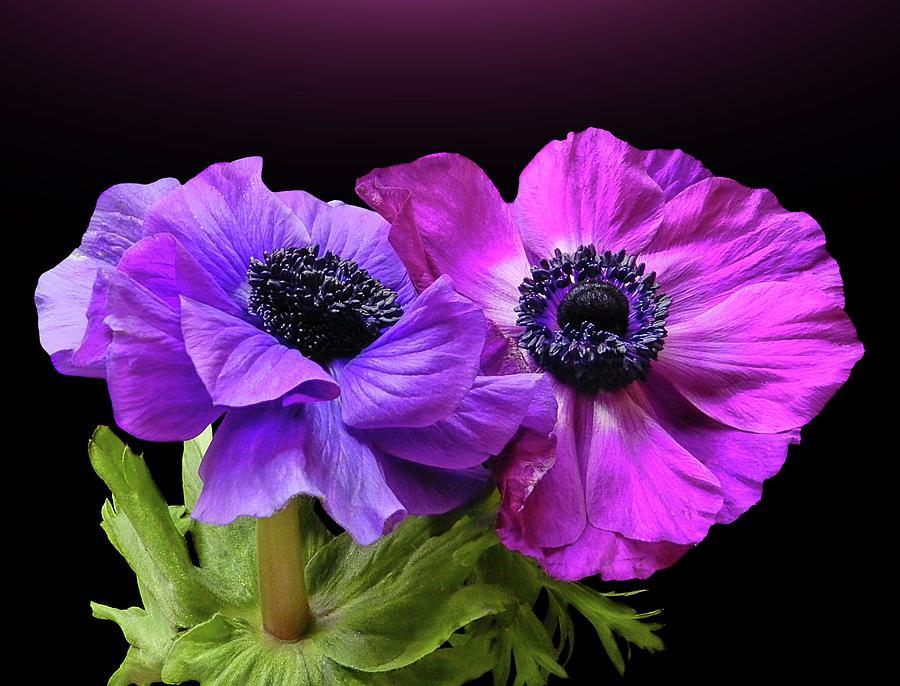
About anemones
Spring blooming anemones are low growing plants that are good choices for woodland and rock gardens. While most of them grow from creeping rhizomes, Grecian windflower (Anemone blanda) and poppy anemone (A. coronaria) grow from tubers. Plant these early bloomers in the fall; Grecian windflowers are hardy in zones 4-7, while poppy anemones thrive in zones 6-9 and are also popular for forcing.
Tall growing fall anemones add color to borders and woodland gardens from late summer to late fall in shades of pink and white. These Asian natives bear large, cup-shaped blossoms on graceful stems that sway above clumps of dark green, maple-like leaves.
All anemones are poisonous if ingested.

Special features of anemones
Wood anemone (Anemone nemorosa) This species will often naturalize in the shade of deciduous trees, where its deep green leaves provide a backdrop to its pure white, single, star-shaped flowers in early spring. Pink and blue cultivars are also available. Growing 6-8 inches tall, it prefers rich, moist but well-drained, acid soil; roots will rot if the soil is too soggy. Wood anemone goes dormant in early summer as the trees leaf out. Sometimes it's offered in the fall as a dormant rhizome. Hardy in zones 3-9.
Snowdrop anemone (Anemone sylvestris) Another spring bloomer that naturalizes well, this species has fragrant, single, slightly nodding, 1-2 inch wide flowers on 12-18 inch plants. It prefers the same growing conditions as the wood anemone. Hardy in zones 4-9.
Grapeleaf Anemone (Anemone tomentosa 'Robustissima') Growing about 3 feet tall, this anemone will spread but is not invasive. The hardiest of the fall bloomers, it will grow in zones 3-9. The flowers are silvery pink and come into bloom in early fall, carrying on for several weeks.
Hybrid or Japanese anemone (Amemone x hybrida) This Asian native bears large, single or double, cup-shaped blossoms whose satiny petals surround a contrasting green and gold central button. Commonly available cultivars include the elegant, single-flowered, white variety 'Honorine Jobert', and semi-double, pink 'Queen Charlotte'. Its flowers are borne on 3-4 foot tall stems in mid fall. Hardy in zones 5-9.
Chinese anemone (Anemone hupehensis) Similar to the hybrid anemones, but more compact, these are 2-3 feet tall in bloom. Popular cultivars include deep rose-pink, semi-double 'Prince Henry' and 'September Charm' with single, rose-pink flowers in late summer to early fall. Hardy in zones 4-9.
Choosing a site to grow anemones
Spring blooming anemones do best in part shade. Fall bloomers thrive in full sun to part shade. All appreciate soil that is moist, but well-drained- never soggy and on the acid side.

Planting Instructions
Container grown plants can be set out throughout the growing season, but spring is preferred for fall bloomers. Divide the spring bloomers in midsummer or early fall. Space wood anemones 10 inches apart, snowdrop anemones 12-24 inches apart and fall bloomers 18 inches apart. Prepare the garden bed by using a garden fork or tiller to loosen the soil to a depth of 12 to 15 inches, then mix in a 2- to 4-inch layer of compost. Dig a hole twice the diameter of the pot the plant is in. Carefully remove the plant from its container and place it in the hole so the top of the root ball is level with the soil surface. Carefully fill in around the root ball and firm the soil gently. Water thoroughly.
Ongoing Care
Divide or move plants in the garden only in the spring. Fall anemones may be slow to establish, but once they are settled in they have a tendency to spread, as do the spring bloomers. Deadheading won't prolong bloom, but will make plants look neater.

About anemones
Spring blooming anemones are low growing plants that are good choices for woodland and rock gardens. While most of them grow from creeping rhizomes, Grecian windflower (Anemone blanda) and poppy anemone (A. coronaria) grow from tubers. Plant these early bloomers in the fall; Grecian windflowers are hardy in zones 4-7, while poppy anemones thrive in zones 6-9 and are also popular for forcing.
Tall growing fall anemones add color to borders and woodland gardens from late summer to late fall in shades of pink and white. These Asian natives bear large, cup-shaped blossoms on graceful stems that sway above clumps of dark green, maple-like leaves.
All anemones are poisonous if ingested.

Special features of anemones
Wood anemone (Anemone nemorosa) This species will often naturalize in the shade of deciduous trees, where its deep green leaves provide a backdrop to its pure white, single, star-shaped flowers in early spring. Pink and blue cultivars are also available. Growing 6-8 inches tall, it prefers rich, moist but well-drained, acid soil; roots will rot if the soil is too soggy. Wood anemone goes dormant in early summer as the trees leaf out. Sometimes it's offered in the fall as a dormant rhizome. Hardy in zones 3-9.
Snowdrop anemone (Anemone sylvestris) Another spring bloomer that naturalizes well, this species has fragrant, single, slightly nodding, 1-2 inch wide flowers on 12-18 inch plants. It prefers the same growing conditions as the wood anemone. Hardy in zones 4-9.
Grapeleaf Anemone (Anemone tomentosa 'Robustissima') Growing about 3 feet tall, this anemone will spread but is not invasive. The hardiest of the fall bloomers, it will grow in zones 3-9. The flowers are silvery pink and come into bloom in early fall, carrying on for several weeks.
Hybrid or Japanese anemone (Amemone x hybrida) This Asian native bears large, single or double, cup-shaped blossoms whose satiny petals surround a contrasting green and gold central button. Commonly available cultivars include the elegant, single-flowered, white variety 'Honorine Jobert', and semi-double, pink 'Queen Charlotte'. Its flowers are borne on 3-4 foot tall stems in mid fall. Hardy in zones 5-9.
Chinese anemone (Anemone hupehensis) Similar to the hybrid anemones, but more compact, these are 2-3 feet tall in bloom. Popular cultivars include deep rose-pink, semi-double 'Prince Henry' and 'September Charm' with single, rose-pink flowers in late summer to early fall. Hardy in zones 4-9.
Choosing a site to grow anemones
Spring blooming anemones do best in part shade. Fall bloomers thrive in full sun to part shade. All appreciate soil that is moist, but well-drained- never soggy and on the acid side.

Planting Instructions
Container grown plants can be set out throughout the growing season, but spring is preferred for fall bloomers. Divide the spring bloomers in midsummer or early fall. Space wood anemones 10 inches apart, snowdrop anemones 12-24 inches apart and fall bloomers 18 inches apart. Prepare the garden bed by using a garden fork or tiller to loosen the soil to a depth of 12 to 15 inches, then mix in a 2- to 4-inch layer of compost. Dig a hole twice the diameter of the pot the plant is in. Carefully remove the plant from its container and place it in the hole so the top of the root ball is level with the soil surface. Carefully fill in around the root ball and firm the soil gently. Water thoroughly.
Ongoing Care
Divide or move plants in the garden only in the spring. Fall anemones may be slow to establish, but once they are settled in they have a tendency to spread, as do the spring bloomers. Deadheading won't prolong bloom, but will make plants look neater.
1
0
求助
pokemondude13
2017年10月03日

please help me ID my succulent and help him grow back to full health. Any tips on the species he turns out to be is more than welcome, this is my first succulent.#help #Layering #suncculents
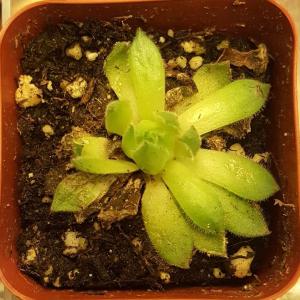

0
0
Ueca:This is a Sempervivum. Plant it into any spot of soil in your yard, or anywhere that gets fresh air. If in a yard, check at night to make sure slugs aren't trying to eat it.
Usually just leaving it alone in the front yard is a pretty good plan.
文章
Dummer. ゛☀
2017年10月02日

People have been growing Aloe vera for literally thousands of years. It is one of the most widely used medicinal plants on the planet. If you are wondering, “How can I grow an aloe plant?” We are here to tell you that taking care of an Aloe Vera plant in your home is easy.
Keep reading to learn more about how to grow and care for an Aloe Vera plant.

Growing Conditions
The first step in Aloe Vera care is to realize that this plant is a succulent. Like cacti, succulents do best in dry conditions. When growing Aloe Vera plants, plant them in a cactus potting soil mix or a regular potting soil that has been amended with additional perlite or building sand. Also, make sure that the pot has plenty of drainage holes. It cannot tolerate standing water.
One important thing in the care of Aloe Vera houseplants is that they have proper light. They need bright light, so they do best in south- or west-facing windows.

General Care
Another important part of how to grow an Aloe Vera is to water the plant properly. The soil should be allowed to go completely dry before being watered. When the plant is watered, the soil should be thoroughly drenched, but the water should be allowed to drain freely from the soil. The most common reason an Aloe Vera dies is that the owners water too often or do not allow the water to drain. Do not make this mistake when taking care of Aloe houseplants.
You can fertilize your Aloe Vera, but Aloes do not need to be fertilized. If you decide to add fertilizing to part of your Aloe Vera plant care routine, plants should be fertilized once a year in the spring. You can use a phosphorus-heavy water-based fertilizer at half strength.
Growing Aloe Vera houseplants is not only easy but can also provide your family with a plant that can help treat minor burns and rashes. Now that you know a little more about how to care for an Aloe Vera plant, you need never be without this lovely and helpful plant.
Keep reading to learn more about how to grow and care for an Aloe Vera plant.

Growing Conditions
The first step in Aloe Vera care is to realize that this plant is a succulent. Like cacti, succulents do best in dry conditions. When growing Aloe Vera plants, plant them in a cactus potting soil mix or a regular potting soil that has been amended with additional perlite or building sand. Also, make sure that the pot has plenty of drainage holes. It cannot tolerate standing water.
One important thing in the care of Aloe Vera houseplants is that they have proper light. They need bright light, so they do best in south- or west-facing windows.

General Care
Another important part of how to grow an Aloe Vera is to water the plant properly. The soil should be allowed to go completely dry before being watered. When the plant is watered, the soil should be thoroughly drenched, but the water should be allowed to drain freely from the soil. The most common reason an Aloe Vera dies is that the owners water too often or do not allow the water to drain. Do not make this mistake when taking care of Aloe houseplants.
You can fertilize your Aloe Vera, but Aloes do not need to be fertilized. If you decide to add fertilizing to part of your Aloe Vera plant care routine, plants should be fertilized once a year in the spring. You can use a phosphorus-heavy water-based fertilizer at half strength.
Growing Aloe Vera houseplants is not only easy but can also provide your family with a plant that can help treat minor burns and rashes. Now that you know a little more about how to care for an Aloe Vera plant, you need never be without this lovely and helpful plant.
2
1
cclecombe
2017年10月01日

Here's what my work in grow-cess area (aka kitchen) looks like at the moment. I have a few more rescue missions to add to my garden later too!




3
0
文章
Dummer. ゛☀
2017年09月30日

Many gardeners cherish succulent plants for their ease of care and beauty. Although most plants of this classification are very simple to grow, a few stand out as being particularly low maintenance choices that are ideal for beginning gardeners as well as experienced enthusiasts with the greenest of thumbs.
1. Aloe
Aloe plants come in a wide variety of species of differing shapes and sizes. The numerous species are easy to grow, and Aloe succulents such as Aloe juvenna, Aloe tenuior, and Aloe andongensis generally only require simple, basic care. Each Aloe forms with varying textures and patterns on the foliage, allowing gardeners to have much greater aesthetic variety in their homes and yards.
Aloe plants grow in the summer months and require little shade and regular watering during the growing season. Gardeners should keep the plants relatively dry during the winter. When kept in the sun in well-drained soil, Aloe succulents thrive. Other types of Aloe succulents include Aloe brevifolia, Aloe aristata, and Aloe ‘Black Gem’.
2. Agave
Agave succulent plants blossom in bright and warm places, such as on patios, decks, and sunny windowsills. Some smaller varieties, such as Agave victoriae-reginae and Agave parviflora, are also capable of flourishing indoors. Most Agave plants consist of rosettes that have thick, rigid succulent leaves and minimal teeth.
When caring for an Agave, a gardener should allow the plant to dry out between watering sessions. Agave plants can handle any type of well-drained soil, and the plants flourish in full sunlight. Although Agaves can survive periods of drought, it is best to provide ample water to encourage vigorous growth, especially if the plants are in the sun all day.
3. Crassula
Crassula is a succulent plant that many beginners love to grow. Ranging in size from an inch (2.5 cm) tall to large shrubs, Crassulas require good light and a soil mix that drains well if gardeners want to maintain appealing leaf colors and encourage the plants to flower. Watering the plants regularly during spring and summer is ideal, but Crassula plants generally require less water in the winter months. The plants are drought tolerant, and they require cutting and shaping to avoid becoming disorderly.
Good options for Crassulas include the Crassula arborescens, Crassula ‘Blue Bird’, and Crassula ovata. This succulent is very strong and looks attractive mixed with other plants, making it an excellent low maintenance option for beginners.
4. Adromischus
Native to South Africa, the Adromischus plant is a small succulent shrub with oddly shaped leaves. The leaves feature interesting markings that are inconsistent, offering gardeners aesthetic diversity. The Adromischus cristatus is a very low maintenance succulent that is popular with growers. Other options include Adromischus clavifolius, Adromischus cooperi, and Adromischus leucophyllus.
Care for Adromischus succulent plants entails keeping soil well drained and providing the plants with a dry atmosphere with some shade. They require water mainly in the spring and autumn, and gardeners should allow Adromischus to dry out between watering sessions.
5. Echeveria
Many gardeners choose Echeveria as their favourite succulent because of the popular variations in color and shape. Echeveria shows its most brilliant colors during cooler months, and the plants typically flower during warmer months in shades of orange, red, and pink. Some of the most popular varieties of the plant include Echeveria albicans, Echeveria colorata, Echeveria ‘Dondo’, and Echeveria agavoides.
This succulent can tolerate lengthy dry periods, but it flourishes when it receives adequate water during the growing periods. Porous soil prevents root rot with the Echeveria plant, and ventilation minimizes the risk of pest infestations and disease. Typically, Echeveria plants have better color and shape when they receive more sunlight, although the plant still requires some sun protection during scorching summer weather.

1. Aloe
Aloe plants come in a wide variety of species of differing shapes and sizes. The numerous species are easy to grow, and Aloe succulents such as Aloe juvenna, Aloe tenuior, and Aloe andongensis generally only require simple, basic care. Each Aloe forms with varying textures and patterns on the foliage, allowing gardeners to have much greater aesthetic variety in their homes and yards.

Aloe plants grow in the summer months and require little shade and regular watering during the growing season. Gardeners should keep the plants relatively dry during the winter. When kept in the sun in well-drained soil, Aloe succulents thrive. Other types of Aloe succulents include Aloe brevifolia, Aloe aristata, and Aloe ‘Black Gem’.

2. Agave
Agave succulent plants blossom in bright and warm places, such as on patios, decks, and sunny windowsills. Some smaller varieties, such as Agave victoriae-reginae and Agave parviflora, are also capable of flourishing indoors. Most Agave plants consist of rosettes that have thick, rigid succulent leaves and minimal teeth.
When caring for an Agave, a gardener should allow the plant to dry out between watering sessions. Agave plants can handle any type of well-drained soil, and the plants flourish in full sunlight. Although Agaves can survive periods of drought, it is best to provide ample water to encourage vigorous growth, especially if the plants are in the sun all day.

3. Crassula
Crassula is a succulent plant that many beginners love to grow. Ranging in size from an inch (2.5 cm) tall to large shrubs, Crassulas require good light and a soil mix that drains well if gardeners want to maintain appealing leaf colors and encourage the plants to flower. Watering the plants regularly during spring and summer is ideal, but Crassula plants generally require less water in the winter months. The plants are drought tolerant, and they require cutting and shaping to avoid becoming disorderly.
Good options for Crassulas include the Crassula arborescens, Crassula ‘Blue Bird’, and Crassula ovata. This succulent is very strong and looks attractive mixed with other plants, making it an excellent low maintenance option for beginners.

4. Adromischus
Native to South Africa, the Adromischus plant is a small succulent shrub with oddly shaped leaves. The leaves feature interesting markings that are inconsistent, offering gardeners aesthetic diversity. The Adromischus cristatus is a very low maintenance succulent that is popular with growers. Other options include Adromischus clavifolius, Adromischus cooperi, and Adromischus leucophyllus.
Care for Adromischus succulent plants entails keeping soil well drained and providing the plants with a dry atmosphere with some shade. They require water mainly in the spring and autumn, and gardeners should allow Adromischus to dry out between watering sessions.

5. Echeveria
Many gardeners choose Echeveria as their favourite succulent because of the popular variations in color and shape. Echeveria shows its most brilliant colors during cooler months, and the plants typically flower during warmer months in shades of orange, red, and pink. Some of the most popular varieties of the plant include Echeveria albicans, Echeveria colorata, Echeveria ‘Dondo’, and Echeveria agavoides.

This succulent can tolerate lengthy dry periods, but it flourishes when it receives adequate water during the growing periods. Porous soil prevents root rot with the Echeveria plant, and ventilation minimizes the risk of pest infestations and disease. Typically, Echeveria plants have better color and shape when they receive more sunlight, although the plant still requires some sun protection during scorching summer weather.
1
0
文章
Dummer. ゛☀
2017年09月30日

There are currently 235,000 known species of flowering plants in the world, and more are discovered every year. More than 60 percent of these grow in the warm, wet climate of tropical rainforests. Some tropical flowers go to extremes in size, odor and survival strategies. Most of these couldn’t survive in a suburban garden, and you probably wouldn’t want them to. 
There are, however, some uncommon flowers that you can safely harbor in your garden or on your window sill. In this article, we’ll examine 10 very unusual flowers.
1. Snake’s Head (Fritillaria meleagris)
A species of flowering plant in the family Liliaceae. Its other common names include Chess Flower, Frog Cup, Guinea Hen Flower, Leper Lily (because its shape resembled the bell once carried by lepers), Lazarus Bell, Checkered Lily or, in northern Europe, simply Fritillary.
2. Flame Lily (Gloriosa superba)
This unusual flowering plant is native of tropical regions of Asia and Africa and belongs to the family Colchicaceae. Flame Lily usually grows as tuberous climbing plant and produces unusual red or yellow flowers with wavy edges. It is the national flower of Zimbabwe.
3. Corpse Lily (Rafflesia arnoldii)
This remarkable flower is the largest flower in the world. It is rare and hard to find in its habitat which are the rain forests of Bengkulu, Sumatra Island and Indonesia. Flowers emit bad smell and can be as wide as 3.3 feet (1 m) wide and weigh up to 24 lbs (11 kg).
4. Bird of Paradise (Strelitzia reginae)
Bird of Paradise also known as Crane Flower is another unusual flower from South Africa. The plant belongs to the family Strelitziaceae and produced unusually colorful and beautiful flowers that resemble a bird.
5. Bee Orchid (Ophrys apifera)
Bee Orchid comes from the Mediterranean regions and belongs to the Orchid family. This perennial plant produces between one and ten flowers on each spike every summer.
6. Bleeding Heart (Lamprocapnos spectabilis)
A species of flowering plant in the Poppy family, native to Siberia, northern China, Korea and Japan. It is valued in gardens and in floristry for its heart-shaped pink flowers (that are poisonous). It is also known as Lady-in-a-Bath.
7. Maypop Passion Flower (Passiflora incarnata)
A fast growing perennial vine with climbing or trailing stems with large, intricate flowers with prominent styles and stamens. A member of the passionflower genus Passiflora. it is a common wildflower in the southern United States. Also known as Purple Passionflower, True Passionflower, Wild Apricot, and Wild Passion Vine.
8. Sea Poison Tree (Barringtonia asiatica)
A species of Barringtonia, common along the coasts of the Pacific Ocean and Indian Ocean. They have a sickly sweet smell that attracts bats and moths at night. It is grown along streets for decorative and shade purposes in some parts of India.
9. Torch Ginger (Etlingera elatior)
A species of herbaceous perennial plant. It is an exceptionally red, waxy flower found throughout gardens in Costa Rica. The showy flowers are used in decorative arrangements while the flower buds are an important ingredient in the Nyonya dish Laksa. In North Sumatra, the flower buds are used for a dish called Arsik Ikan. mas.
10. Huernia oculata
This flowering plant belongs to the family Apocynaceae. The plant produces small succulent stems that can be used to propagate the plant. The plant is fairly easy to grow in well drained soil and dry climate.

There are, however, some uncommon flowers that you can safely harbor in your garden or on your window sill. In this article, we’ll examine 10 very unusual flowers.
1. Snake’s Head (Fritillaria meleagris)
A species of flowering plant in the family Liliaceae. Its other common names include Chess Flower, Frog Cup, Guinea Hen Flower, Leper Lily (because its shape resembled the bell once carried by lepers), Lazarus Bell, Checkered Lily or, in northern Europe, simply Fritillary.

2. Flame Lily (Gloriosa superba)
This unusual flowering plant is native of tropical regions of Asia and Africa and belongs to the family Colchicaceae. Flame Lily usually grows as tuberous climbing plant and produces unusual red or yellow flowers with wavy edges. It is the national flower of Zimbabwe.

3. Corpse Lily (Rafflesia arnoldii)
This remarkable flower is the largest flower in the world. It is rare and hard to find in its habitat which are the rain forests of Bengkulu, Sumatra Island and Indonesia. Flowers emit bad smell and can be as wide as 3.3 feet (1 m) wide and weigh up to 24 lbs (11 kg).

4. Bird of Paradise (Strelitzia reginae)
Bird of Paradise also known as Crane Flower is another unusual flower from South Africa. The plant belongs to the family Strelitziaceae and produced unusually colorful and beautiful flowers that resemble a bird.

5. Bee Orchid (Ophrys apifera)
Bee Orchid comes from the Mediterranean regions and belongs to the Orchid family. This perennial plant produces between one and ten flowers on each spike every summer.

6. Bleeding Heart (Lamprocapnos spectabilis)
A species of flowering plant in the Poppy family, native to Siberia, northern China, Korea and Japan. It is valued in gardens and in floristry for its heart-shaped pink flowers (that are poisonous). It is also known as Lady-in-a-Bath.

7. Maypop Passion Flower (Passiflora incarnata)
A fast growing perennial vine with climbing or trailing stems with large, intricate flowers with prominent styles and stamens. A member of the passionflower genus Passiflora. it is a common wildflower in the southern United States. Also known as Purple Passionflower, True Passionflower, Wild Apricot, and Wild Passion Vine.

8. Sea Poison Tree (Barringtonia asiatica)
A species of Barringtonia, common along the coasts of the Pacific Ocean and Indian Ocean. They have a sickly sweet smell that attracts bats and moths at night. It is grown along streets for decorative and shade purposes in some parts of India.

9. Torch Ginger (Etlingera elatior)
A species of herbaceous perennial plant. It is an exceptionally red, waxy flower found throughout gardens in Costa Rica. The showy flowers are used in decorative arrangements while the flower buds are an important ingredient in the Nyonya dish Laksa. In North Sumatra, the flower buds are used for a dish called Arsik Ikan. mas.

10. Huernia oculata
This flowering plant belongs to the family Apocynaceae. The plant produces small succulent stems that can be used to propagate the plant. The plant is fairly easy to grow in well drained soil and dry climate.

0
0
文章
Dummer. ゛☀
2017年09月30日

Hibiscus flowers are one of the most spectacular blossoms a container gardener can grow. The blooms are large, colorful and incredibly graceful. The foliage of the Hibiscus plant is also beautiful – the dark green, glossy leaves, provide a wonderful contrast to the extravagant blooms.
Tropical Hibiscus flowers are one of the enduring symbols of the tropics. These much-beloved, large and showy flowers can be grown inside in temperate zones, but it’s not an easy task. The trick with success is twofold: managing the deadly winter, and fending off hungry insects. If you can fall into a rhythm, it’s possible to keep a hibiscus plant thriving for a decade or more, with blooms in the summer.
Growing Conditions
Light: Place outside in the summer, gradually acclimating to more light. In the winter, give as much direct light as possible.
Water: Water freely in the summer, but excellent drainage is a must. Never let the mix become soggy. In the winter, let dry almost completely before watering again.
Temperature: Even a few nights below 50ºF (10ºC) will kill a Hibiscus. Move them inside when the temperature is consistently 55ºF (13ºC). They prefer between 55ºF and 70ºF (13ºC and 21ºC).
Soil: Use a well-drained potting mix. Ensure also that the plant isn’t packed in too tight in order to keep its drainage is good. Poor drainage could rot the plant’s roots and slowly wear it down.
Fertilizer: Feed in the early summer with a slow-release fertilizer or weekly with a liquid, blooming fertilizer.
Repotting
Repot as necessary, yearly or biannually. Hibiscus will grow into trees in their native habitats, but this may be unwieldy in a home setting. There’s also some benefit to keeping the Hibiscus in a relatively smaller pot, as it will make for easier pruning and moving. Failure to repot these plants often can leave them in soil without adequate nutrients for their survival, and repotting will often spur on growth if you’re finding that your Hibiscus plants seem to have stalled out. Watch out for falling leaves or other signs of stress.
Propagation
Hibiscus can be propagated with soft-stem cuttings in late spring, when the plant begins to grow again. Use rooting hormone and shelter the cutting from direct sun until it begins to grow. Many gardeners bag their plants, which seals in heat and moisture and increases newly planted cuttings’ chances of surviving. Don’t be discouraged if you can’t propagate your Hibiscus plants right away; it’s a process that takes time, even for experienced gardeners, and upon success you’ll find your new plants all the more rewarding.
Grower’s Tips
Hibiscus should be moved outside in the summer, then back inside during the winter. Tips for a successful transition include:
Trim the plant hard before moving it inside for the winter. It will go into near dormancy until late winter.
After you trim it, but before you bring it in, treat it thoroughly for insects. Neem oil and liquid detergent work well, or use a hose to blast off insects.
Once inside, don’t overwater, but provide as much humidity as possible, including daily mistings. Don’t expose to blowing air from vents.
When the weather warms to above 50ºF (10ºC) at night, move it back outside and acclimate slowly.

Tropical Hibiscus flowers are one of the enduring symbols of the tropics. These much-beloved, large and showy flowers can be grown inside in temperate zones, but it’s not an easy task. The trick with success is twofold: managing the deadly winter, and fending off hungry insects. If you can fall into a rhythm, it’s possible to keep a hibiscus plant thriving for a decade or more, with blooms in the summer.

Growing Conditions
Light: Place outside in the summer, gradually acclimating to more light. In the winter, give as much direct light as possible.
Water: Water freely in the summer, but excellent drainage is a must. Never let the mix become soggy. In the winter, let dry almost completely before watering again.
Temperature: Even a few nights below 50ºF (10ºC) will kill a Hibiscus. Move them inside when the temperature is consistently 55ºF (13ºC). They prefer between 55ºF and 70ºF (13ºC and 21ºC).
Soil: Use a well-drained potting mix. Ensure also that the plant isn’t packed in too tight in order to keep its drainage is good. Poor drainage could rot the plant’s roots and slowly wear it down.
Fertilizer: Feed in the early summer with a slow-release fertilizer or weekly with a liquid, blooming fertilizer.

Repotting
Repot as necessary, yearly or biannually. Hibiscus will grow into trees in their native habitats, but this may be unwieldy in a home setting. There’s also some benefit to keeping the Hibiscus in a relatively smaller pot, as it will make for easier pruning and moving. Failure to repot these plants often can leave them in soil without adequate nutrients for their survival, and repotting will often spur on growth if you’re finding that your Hibiscus plants seem to have stalled out. Watch out for falling leaves or other signs of stress.

Propagation
Hibiscus can be propagated with soft-stem cuttings in late spring, when the plant begins to grow again. Use rooting hormone and shelter the cutting from direct sun until it begins to grow. Many gardeners bag their plants, which seals in heat and moisture and increases newly planted cuttings’ chances of surviving. Don’t be discouraged if you can’t propagate your Hibiscus plants right away; it’s a process that takes time, even for experienced gardeners, and upon success you’ll find your new plants all the more rewarding.

Grower’s Tips
Hibiscus should be moved outside in the summer, then back inside during the winter. Tips for a successful transition include:
Trim the plant hard before moving it inside for the winter. It will go into near dormancy until late winter.
After you trim it, but before you bring it in, treat it thoroughly for insects. Neem oil and liquid detergent work well, or use a hose to blast off insects.

Once inside, don’t overwater, but provide as much humidity as possible, including daily mistings. Don’t expose to blowing air from vents.
When the weather warms to above 50ºF (10ºC) at night, move it back outside and acclimate slowly.
0
0


